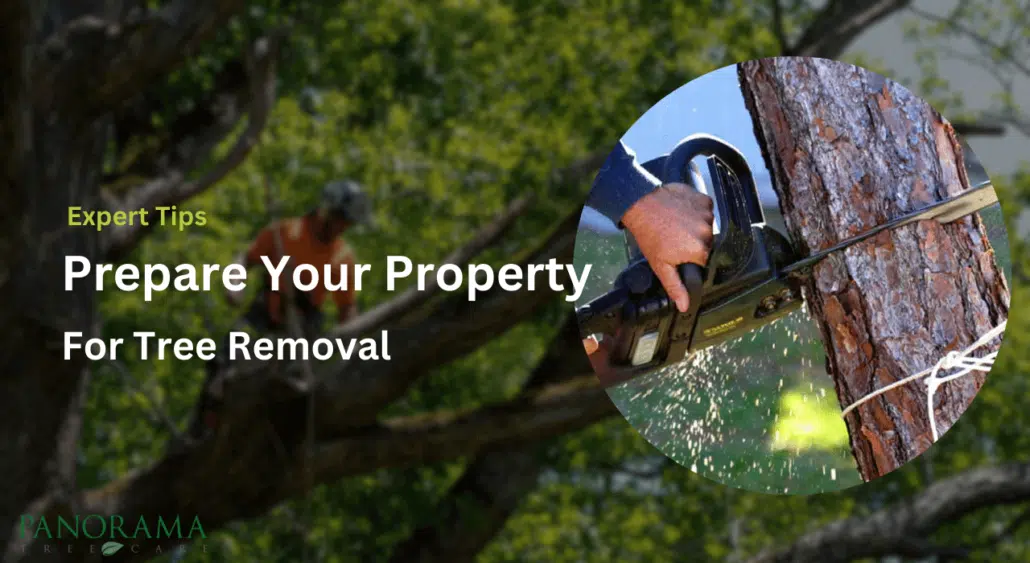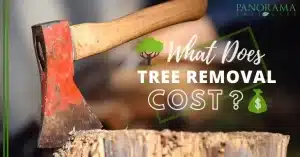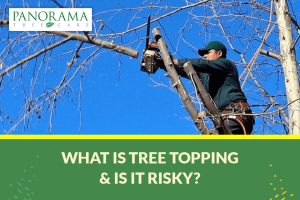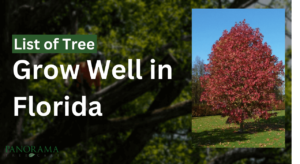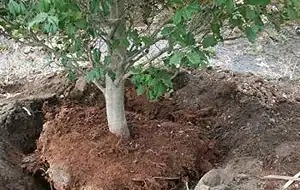When it comes to tree removal, proper preparation is key to ensuring a smooth and successful process.
Whether you’re dealing with a diseased tree, storm damage aftermath, or simply need to clear space for construction, taking proactive steps can make all the difference.
In this guide, we’ll delve into the importance of preparation and outline the steps you need to take for a safe and effective tree removal experience.
Understanding the Need for Tree Removal
Disease
Trees can succumb to various diseases, which can weaken their structural integrity and pose risks to surrounding property and individuals.
Common tree diseases include fungal infections, bacterial infections, and infestations by pests like insects.
Storm Damage
Severe weather events such as storms, hurricanes, or heavy winds can cause significant damage to trees.
This damage may result in broken branches, uprooting, or leaning trees, all of which can pose safety hazards or cause further property damage if not addressed promptly.
Construction Projects
Trees may need to be removed to make way for new construction or development projects.
Whether it’s for building a new structure, expanding a property, or creating space for landscaping, tree removal becomes necessary to accommodate these changes.
Safety Hazards
Trees that are structurally compromised or located in precarious positions can become safety hazards.
This includes trees with large dead branches, leaning trees, or trees with root systems that threaten to damage nearby structures or underground utilities.
In each of these scenarios, hiring a professional tree removal service like us is imperative for several reasons:
Expert Assessment:
Professional arborists have the expertise to assess the condition of trees and determine whether removal is necessary.
They can identify signs of disease, assess storm damage, evaluate risks, and recommend the appropriate course of action.
Safe Execution:
Tree removal can be a dangerous undertaking, especially for large or hazardous trees.
Professional tree removal services have the necessary equipment, training, and experience to safely and efficiently remove trees without causing harm to people or property.
Legal Compliance:
In many areas, there are regulations and permits governing tree removal, especially for protected or heritage trees.
Professional tree removal services are familiar with these regulations and can ensure compliance, avoiding potential fines or legal issues.
Minimizing Property Damage:
Improper tree removal can result in collateral damage to surrounding property, such as structures, landscaping, or underground utilities.
Professional arborists employ techniques to minimize such damage, such as controlled tree felling and strategic placement of equipment.
Site Preparation: Creating a Safe Work Area
Clearing the Surrounding Area
Before the tree removal process begins, it’s essential to remove any obstacles from the vicinity of the tree.
This includes items such as furniture, garden decorations, or vehicles that could impede the movement of equipment or pose safety risks to workers.
Clearing the area provides ample space for maneuvering during the removal process, reducing the likelihood of accidents or damage to property.
Identifying and Protecting Nearby Structures
Nearby structures such as fences, sheds, or power lines must be identified and protected before tree removal commences.
Falling trees or branches can cause significant damage to these structures if not properly safeguarded.
Measures such as installing barriers or padding can help prevent accidental impact and mitigate potential property damage.
Establishing a Designated Drop Zone
Designating a specific area as the drop zone for the tree is essential for ensuring a controlled removal process.
The drop zone should be strategically chosen to minimize the risk of damage to surrounding property or structures.
By directing the tree’s fall into this designated area, arborists can effectively manage the removal process and reduce the likelihood of accidents or property damage.
Access and Workspace Considerations
Clear Access for Equipment and Workers
Clear access pathways are essential to allow equipment such as cranes, chainsaws, and trucks to reach the site where the tree removal will take place.
Adequate space is needed for maneuvering equipment and ensuring that workers can safely navigate around the area.
Clear access facilitates the transportation of heavy machinery and allows for the efficient movement of workers, reducing the risk of accidents or delays.
Identifying Potential Obstacles
Before commencing the tree removal process, it’s crucial to identify any potential obstacles that could hinder access or pose safety risks.
This includes obstacles such as narrow gates, tight corners, or low-hanging wires that may impede the movement of equipment or create hazards for workers.
By identifying these obstacles beforehand, tree removal professionals can develop strategies to overcome them, such as using alternative routes or temporarily removing obstacles to ensure safe access.
Setting Up a Staging Area
A staging area serves as a centralized hub for equipment and debris management during the tree removal process.
This area is typically located near the work site and is used to store equipment, tools, and supplies needed for the project.
By setting up a staging area, tree removal professionals can streamline their workflow, minimize downtime, and ensure that all necessary resources are readily available.
Additionally, the staging area can serve as a designated space for storing debris and waste materials generated during the removal process, facilitating efficient cleanup and disposal.
Protecting Your Property
Covering Outdoor Surfaces
Outdoor surfaces such as patios, decks, pools, and landscaping features are susceptible to damage from falling debris during tree removal.
To protect these surfaces, specialized coverings or tarps can be used to create a barrier between the falling debris and the property below.
These coverings help prevent scratches, dents, or other forms of damage that can occur when branches or tree limbs come into contact with surfaces like concrete, wood, or tiles.
Securing Loose Items
Loose items such as outdoor furniture, garden decorations, or children’s toys should be secured or temporarily moved away from the work area.
Strong winds generated during tree removal operations can cause these items to become airborne projectiles, posing a safety hazard to both workers and property.
Securing loose items ensures they remain intact and prevents them from causing damage to structures, vehicles, or other belongings nearby.
Identifying and Protecting Underground Utilities
Before starting the tree removal process, it’s essential to identify and mark the location of underground utilities such as sprinkler systems, septic tanks, or buried cables.
Accidental damage to these utilities can result in costly repairs and disruptions to essential services.
Once identified, precautions such as fencing or barriers can be put in place to protect these utilities from damage during tree removal activities.
In some cases, it may be necessary to coordinate with utility companies to temporarily shut off services or relocate underground lines to ensure they remain safe during the removal process.
Safety Precautions
Establishing a Safe Perimeter
Before initiating tree removal, it’s crucial to establish a safe perimeter around the work area to keep bystanders, including onlookers and pets, at a safe distance.
Falling trees or branches pose significant risks, and maintaining a safe distance reduces the likelihood of accidents or injuries.
Physical barriers such as caution tape or safety cones can be used to mark the perimeter and clearly define restricted areas.
Providing Proper Personal Protective Equipment (PPE)
Equipping workers with appropriate personal protective equipment (PPE) is essential to minimize the risk of injuries during tree removal.
PPE may include items such as hard hats, safety goggles, ear protection, gloves, and steel-toed boots.
These protective gear items help shield workers from potential hazards such as falling debris, sharp branches, noise, and impact injuries.
Adhering to Local Regulations and Obtaining Permits
Compliance with local regulations and obtaining necessary permits is critical to ensure that tree removal activities are conducted legally and safely.
Local authorities may have specific guidelines and requirements regarding tree removal, especially in urban or protected areas.
Obtaining permits demonstrates a commitment to following established protocols and mitigates the risk of facing fines or legal consequences for non-compliance.
Communication with the Tree Removal Service
Discussing the Scope of Work and Expectations
Before the tree removal process begins, it’s important to have a detailed discussion with the tree removal service provider about the scope of work.
This includes identifying the specific trees to be removed, assessing the level of difficulty or complexity involved, and agreeing on the desired outcomes.
By clearly defining the scope of work and expectations upfront, both parties can ensure alignment on project objectives and minimize the risk of misunderstandings or discrepancies later on.
Addressing Specific Concerns or Requests
Property owners may have specific concerns or requests related to the tree removal process that need to be addressed.
This could include considerations such as preserving certain trees or vegetation, minimizing disruption to surrounding areas, or coordinating with other ongoing projects on the property.
By openly discussing and addressing these concerns or requests, the tree removal service can tailor their approach to accommodate the unique needs of the property owner, enhancing satisfaction and overall project success.
Coordinating Schedule and Timeline
Timely completion of the tree removal project is essential to minimize disruption and ensure that other planned activities can proceed as scheduled.
Coordinating the schedule and timeline with the tree removal service allows for efficient planning and allocation of resources.
This includes determining the start date, estimating the duration of the project, and identifying any potential scheduling constraints or considerations.
By establishing clear timelines and milestones, both parties can track progress, anticipate any potential delays, and ensure that the project stays on track for timely completion.
Post-Removal Cleanup and Restoration
Debris Removal and Disposal
Following tree removal, there will likely be debris such as branches, logs, and brush scattered around the work site.
Discussing debris removal and disposal options with the tree removal service provider is essential to ensure that the area is left clean and free of debris.
Depending on the amount of debris generated, options may include chipping branches for mulch, hauling away larger pieces of wood, or arranging for a waste removal service to dispose of the debris properly.
Stump Grinding or Removal
After the tree is removed, the remaining stump may pose obstacles to landscaping or future construction projects.
Considering stump grinding or removal services is essential for reclaiming the space previously occupied by the tree and preventing regrowth.
Stump grinding involves mechanically grinding the stump into wood chips, which can then be used as mulch or disposed of accordingly.
Choosing between stump grinding and removal depends on factors such as the size of the stump, future land use plans, and budget considerations.
Landscape Repairs or Replanting
Once the tree and stump have been removed, the area may require landscape repairs or replanting to restore its appearance and functionality.
This may involve filling in any holes or depressions left behind by the removal process, reseeding or sodding grassy areas, or replanting vegetation to enhance the landscape.
Property owners should consider the overall design and aesthetics of their outdoor space when planning landscape repairs or replanting efforts.
Consulting with landscaping professionals or arborists can provide valuable insight and recommendations for restoring the area to its former beauty.
Conclusion
Proper preparation is key to ensuring a safe and efficient tree removal process on your property.
By following these expert tips, you can minimize potential risks, prevent damage, and facilitate a smooth experience from start to finish.
Remember, consulting with professional tree removal services is essential to ensure the job is done correctly and to avoid any unnecessary hazards or complications.

